I wrote my first post on Substack exactly one year ago, on May 1, 2023. To be honest that is surprising…it feels like I’ve been here forever.
I’ve changed things a little since I started, and lately I’ve been re-writing some of my earliest posts. I hope those of you who have been with me from the beginning will forgive me, but I’m revisiting Paris for the first anniversary of Beautiful Things. I mean, who wouldn’t want to spend their anniversary in Paris, right? And records show that the first time I wrote about Paris here, the posts went out to fourteen people (hi family and friends!) and there are substantially more of you now.
Before I start, though, I wanted to thank you all for being here, and for reading my letters - I’m so sincerely grateful for your time.
{Paris, France}
The 19th-century French writer Jules Renard wrote “Just add three letters to Paris and you have Paradise.” And if you love history and and art it’s hard to disagree. If you love food and wine and cafés and patisseries…and if, like me, you love museums and libraries and people watching and fashion and architecture and music and perfume and stained glass, he’s probably right.
If you love beautiful things, it doesn’t get much better than Paris.
So here I am in Paris. My temporary neighborhood is in a not-so-fashionable, high-number arrondissement, but that’s ok. Actually, I like it. I like the quiet…especially the quiet of early mornings. I like walking through the streets and watching how Parisians really, live - how they wake up, how they get to work. How they prepare for their day.
Also, the boulangeries have the best selection if you get there early. Priorities, you know.
When I tell people that I lived in Chicago for thirteen years they often grimace. I never understand it - can’t they see how beautiful the city is? How wonderful the people are? And then I remember that they’ve likely only seen the tourist version of the city: crowds and traffic and noise. Frustration.
When I think of Chicago, I think of neighborhood streets lined with 19th-century workers’ cottages and the bar on the corner. Family-owned shops next door, and the ever-present sounds of the El overhead taking people to and from work. A million neighborhood parks. The Lake.
It is the oldest story in the book: get off of the beaten path.
I know there are bathrooms in some hotels that are bigger than my whole room in this out-of-the way neighborhood - but that’s ok. It’s still Paris, and it still has a window that looks out onto a wide boulevard lined with archetypal Haussmannian buildings.
Plus, there is a Metro station right down the block, and that means the entire city is right at my feet.
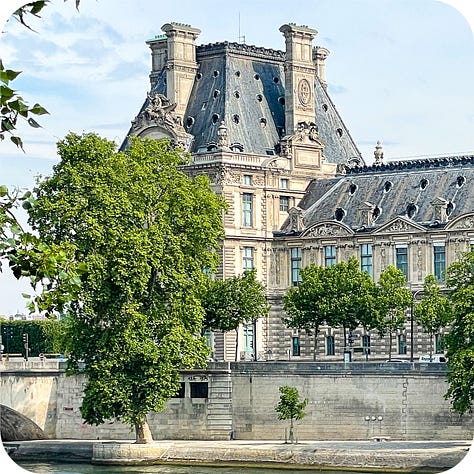
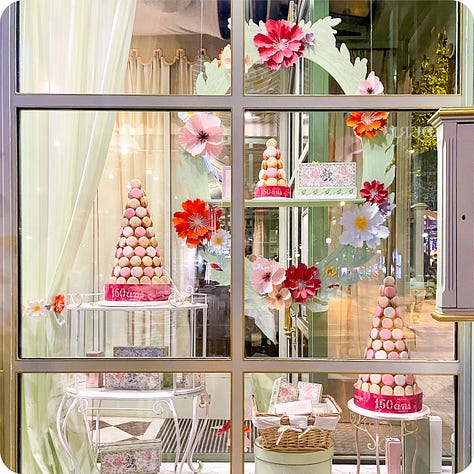
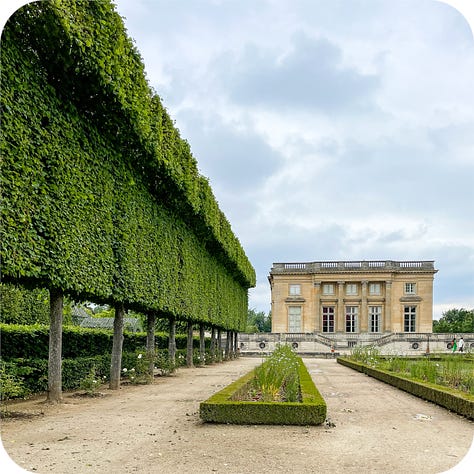
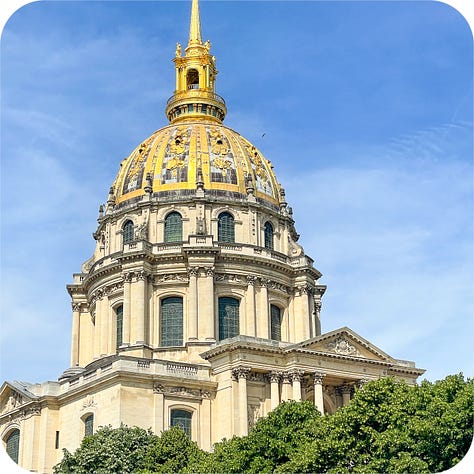

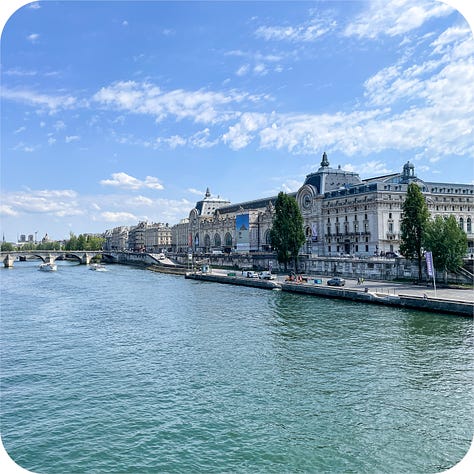
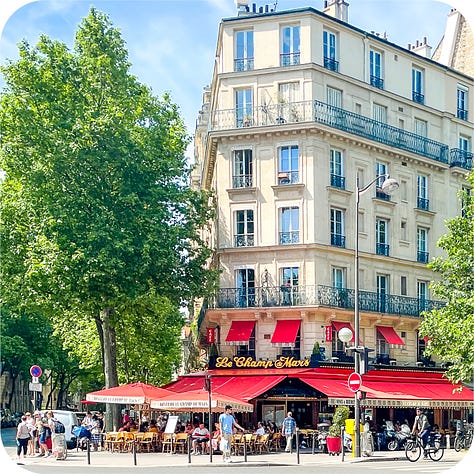
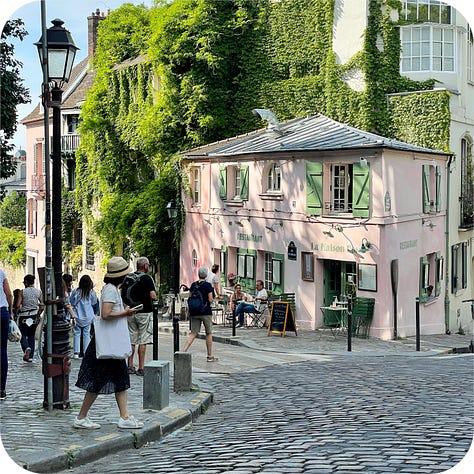
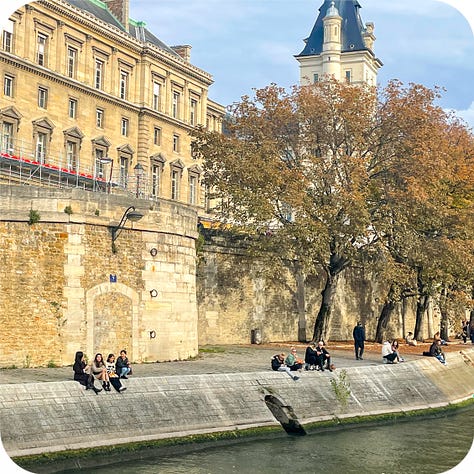
The pandemic is still fresh in everyone’s minds here - of course it is. Masks are still required on public transportation, but hardly anywhere else. I wear one occasionally on the streets, but mostly because I find it helps to keep the smell of cigarette smoke at bay. The constant presence of cigarette smoke is far and away the worst thing about visiting Paris. Statistics say that breathing Parisian air for one year is the equivalent of smoking 183 cigarettes. I’ve come down with a sinus infection and it leads me to Google: can you get a sinus infection from secondhand smoke? And the answer seems to be: yes, easily.
So that’s annoying. As lovely as Paris is, it’s not all perfect. Some of the stereotypes are true - occasionally waiters are snobby, particularly in touristy areas. They’re easy enough to laugh off, though, as the vast majority are friendly and efficient.
It is expensive, of course, and sometimes crowded. The crowds have not been terrible, though, unless you happen to be standing directly in front of Whistler’s Mother or, god forbid, the Mona Lisa. Influencers are everywhere, posing, having their picture taken, walking away from the camera, twirling, looking over their shoulder. It seems they just want to get the picture and move on to the next Instagramable site. It’s enough to make you want to put down your camera forever…but you can’t because it’s just so pretty.
So pretty, in fact, that all of these petty annoyances just float away like petals on the Paris breeze…
Somehow it’s hard to believe that you’re in Paris if you haven’t seen the Eiffel Tower - so a quick visit is the first order of business. Just a glimpse is all I need, I’ve been to Paris before, after all. Here’s the thing with the Eiffel Tower: we all know what it looks like, we all know what to expect. And yet, it’s still a thrill to see it - this crazy, tall, mass of iron that was built as an entrance gate for the 1889 World’s Fair.
Critics hated it at the time: 47 famous artists and writers signed a petition to protest it’s construction in, including Alexandre Dumas and Guy de Maupassant. And to be honest, I kind of don’t blame them - as much as it is an iconic symbol of the city now, as an entrance gate it’s a little bit…weird. Parisians grew to love it, of course, except for Guy de Maupassant, who ate at the tower’s restaurant often, it is said, because it was the “only place in Paris he didn’t have to look at the Eiffel Tower.”
It’s browner than I remember (has it always been brown?), but it welcomes me to the city just like it welcomed visitors to the World’s Fair over a hundred years ago.
{Lutèce}
The second order of business is, naturally, ice cream.
Some of the best ice cream in Paris is found at Berthillon, on the Ile Saint-Louis, one of the two islands in the middle of the Seine where Paris was founded 2000 years ago as the Roman settlement Lutetia - Lutèce, in French.
There is an important terrorist trial happening at the Palais de Justice, on the other island - Ile de la Cité - and consequently many of the streets are closed to pedestrian traffic. Combined with the ongoing construction at nearby Notre-Dame, the island is in chaos…and it’s necessary to skirt along the residential building on the edges of the Seine to reach the bridge that will lead to Ile Saint-Louis (and ice cream heaven). As the sun starts to set over the Seine, it’s hard not to think that the people who live in these apartments are the luckiest people in the world.
One apartment building in particular has a little sign over the window, and when I read what it says it stops me in my tracks, and has me practically jumping up and down.
“The former home of Heloise and Abelard, 1118. Rebuilt in 1849”.
Heloise and Abelard: the 12th-century Parisians Peter Abelard, a prominent writer and scholar who fell in love with his much younger (and also brilliant) student Heloise, while Heloise was living at her uncle’s house on the Île de la Cité. Heloise became pregnant, and - to make a long story short - this was followed by banishment to Brittany, the birth of a son, secret marriage, Heloise living with nuns, Abelard’s castration by Heloise’s uncle, Abelard consequently becoming a monk, and so on. It’s all very tragic and Romeo and Juliet-esque: except it’s real. And it started here. It’s one of those moments when you can’t believe what you’re seeing is what you’re seeing.
It’s enough to render me temporarily speechless…but luckily I gather my wits together moments later in order to step up to the window at Berthillon and pick from one of the dozens of ice creams they have displayed. Honey nougat. It’s delicious.
{Père Lachaise}
These days Heloise and Abelard are buried together in a beautiful tomb at Père Lachaise Cemetery. But they haven’t always been there, and Père Lachaise was not always the fashionable cemetery that it is today.
At the end of the 18th century the graveyards of Paris were filled to capacity - so much so that public officials were worried about the health effects of overflow corpses in shallow graves. In 1804 the French government outlawed all burials within the city limits. The country’s new Emperor - Napoleon Bonaparte - believed that all men had the right to a proper burial, and so laid plans for four new cemeteries right outside of the city limits, including one on the former country estate of Père François de la Chaise.
Who was Père Lachaise, anyway? It turns out he was confessor to King Louis XIV, the Sun King, of Versailles fame. Père Lachaise lived in a house on this land during the 17th century, and even after he died everyone associated the land with his name. So, in essence, Père Lachaise’s land became Père Lachaise cemetery. Which, honestly, was a pretty lucky break for Père Lachaise, because it’s unlikely many of us would remember his name otherwise.
At the start, no one really wanted to be buried at Père Lachaise - it was too far from the city center. So Parisian officials started what was in effect a marketing campaign: transferring the graves of famous Frenchmen, including Molière, to the cemetery. Business started picking up, and by the time the remains of Abelard and Heloise were moved here in 1817, Père Lachaise was the place to be buried in Paris. It still is.
Jim Morrison’s is the most famous grave at Père Lachaise, of course, and on the day we visit there is a man who appears to have no official affiliation with the cemetery at all loitering in one of the pathways asking passers-by “Jim Morrison?” and pointing them to his grave. And it’s true, Jim Morrison is the reason a lot of people are familiar with the cemetery. But another resident - Oscar Wilde - was the reason that Jim Morrison wanted to be buried there: Jim Morrison wanted to be buried where Oscar Wilde was buried. Like Heloise and Abelard, Oscar Wilde was a transplant - originally buried in the unfashionable Bagneux Cemetary (in the suburbs, for pete’s sake) in a pauper’s grave. His friends and admirers raised funds to have his remains moved to the much fancier Père Lachaise about a decade after his death, and commissioned a distinctive sphinx-adorned tomb, designed by the sculptor Jacob Epstein.
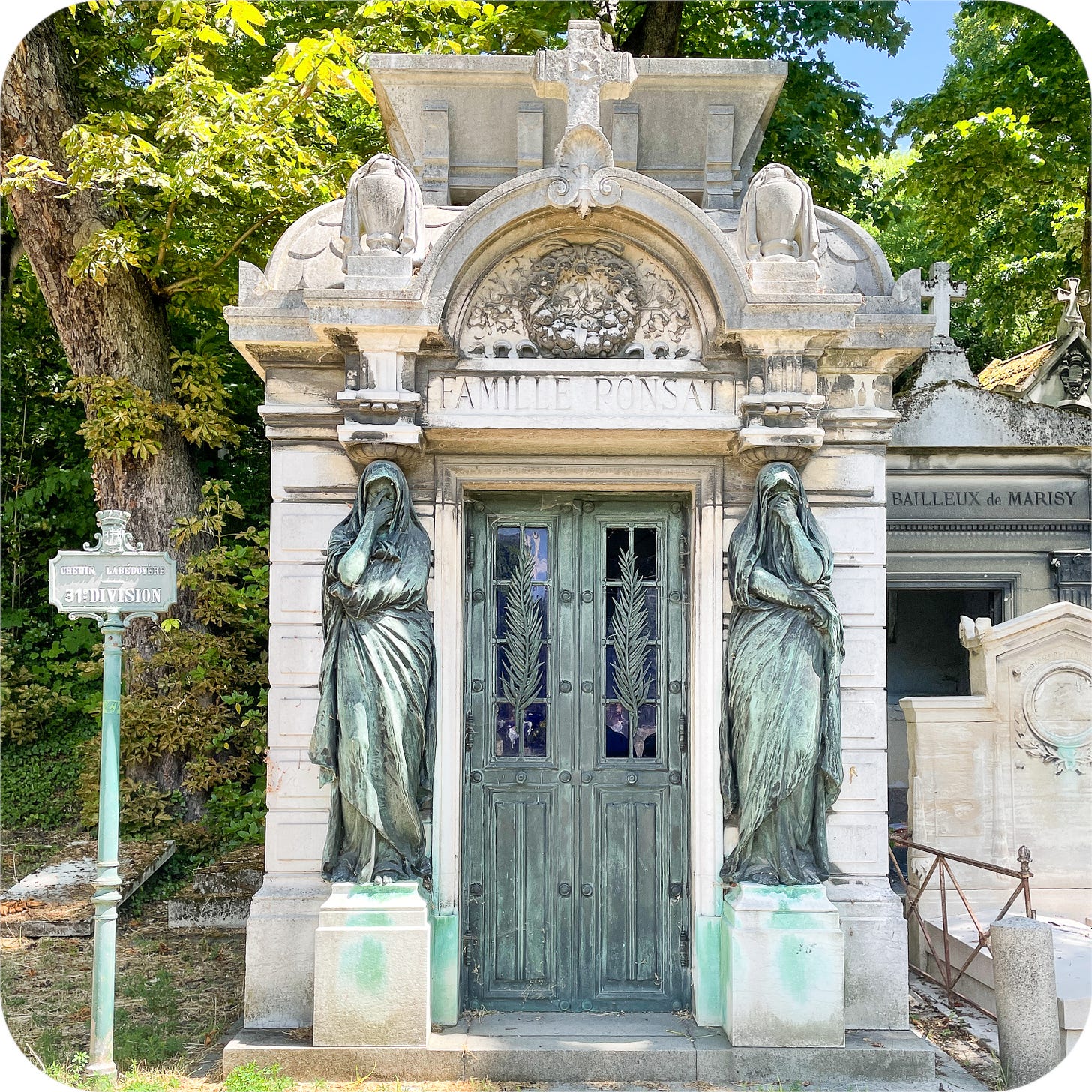
{Jardin des Tuileries}
Remember queen Catherine de Medici from the Loire Valley? In the 16th century, she built a royal palace on the space between the Louvre Palace and the Place de la Concorde. During the Middle Ages, this stretch of land was home to manufacturies that produced tile - tile that was used to roof the houses of Paris. Catherine de Medici called her palace the Palais des Tuileries, in honor of the tile kilns that had once stood on the site (tuiles meaning tiles in French). She had gardens built around her palace, but they were destroyed and replaced in the 17th century by King Henry XIV and his great architect André Le Notre.
The Tuileries Palace was burned and destroyed during the Paris Commune in 1871, along with many other structures including the Hotel de Ville and the grand library of the Louvre. The gardens remain, though: beautiful formal gardens filled with fountains, alleys of trees, beautiful statuary and hundreds and hundreds of green metal chairs.
The chairs are iconic in their own right. Private companies began renting chairs in the Luxembourg Garden - on the other side of the river - in the mid 1800s. The French government decided in the 1920s that they would provide chairs to Parisian free of charge, and purchased several thousand to be split up among the Luxembourg, Tuileries and Palais-Royal Gardens. Amazingly, the chairs lasted until the 21st century, when they were finally replaced by the current model. Ingeniously designed to be light enough to move, yet too heavy to pick up easily, the chairs rarely get stolen.
It is lovely to lounge in the chairs, under the sun. It is April in Paris, and so the gardens are filled with spring blooms. It is all very idyllic and French…until a rat scuttles by. It is not the first rat I’ve seen - I was standing near Shakespeare and Company bookstore one day, laughing at a sign that read “Please Don’t Feed the Rats” in English. It was on a small grassy knoll, and as I wondered to myself if anyone would be stupid enough to actually feed rats, and hoped that I never found myself in a situation that I could even consider it, I realized that the knoll was swarming with them.
If you believe the authorities, tourists are to blame - they may not actually “feed” the rats, but they are too careless with their leftover food. Thus the signs in English. Some people blame climate change, some people blame frequent garbage strikes. It’s probably a bit of all three.
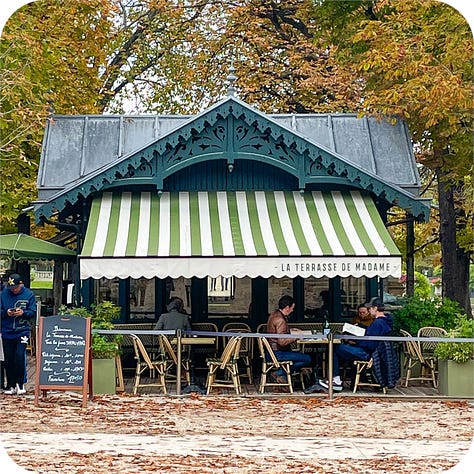
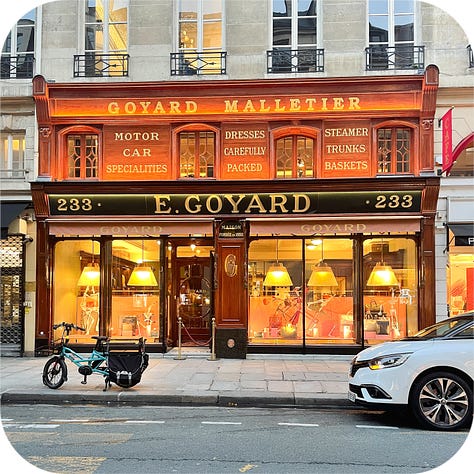
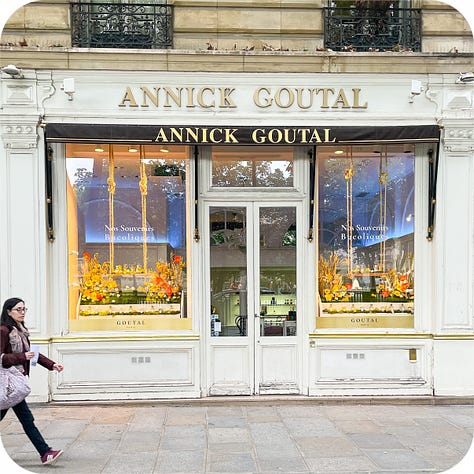
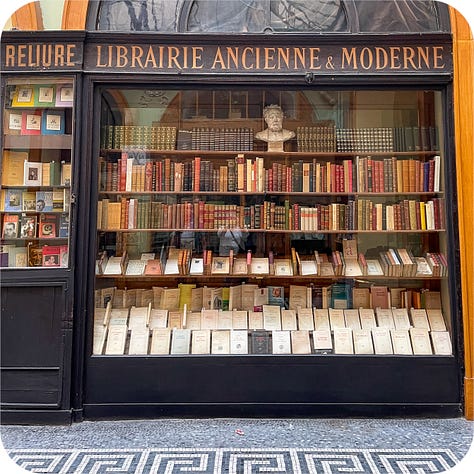
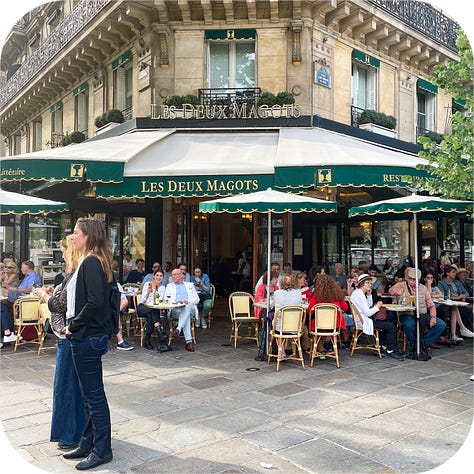
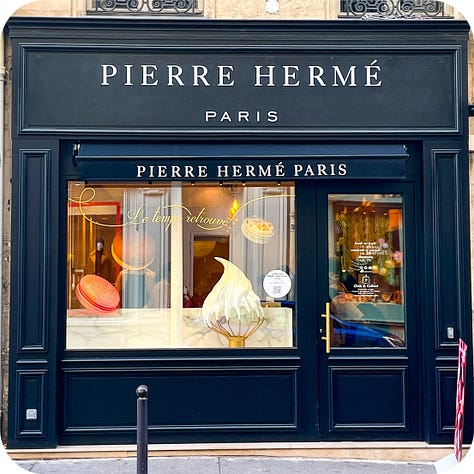
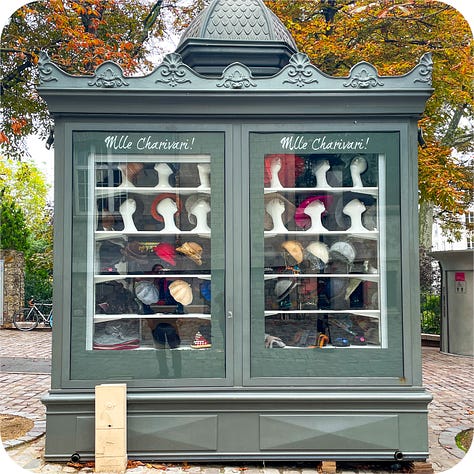
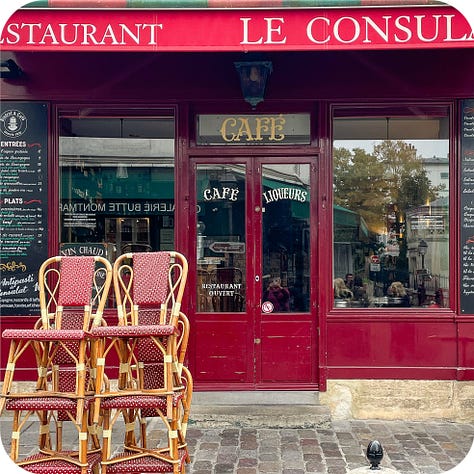
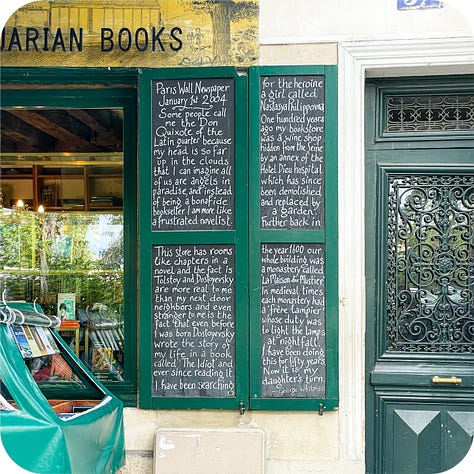
{Le Marais}
Paris has surprisingly few really old houses. Unlike, say, Rouen - or so many other French towns and cities for that matter - it is unusual to find homes from even the 16th or 17th centuries in Paris. To compare: Rouen - a city with a population just over 100,00 - has over 2000 half-timber structures within the city limits…Paris has three. The oldest house still standing in Paris was built in 1407. It was owned by Nicolas Flamel, bookseller and reputed alchemist…of Philosopher’s Stone fame. It’s in the Marais district - one of the city’s oldest neighborhoods.
Paris is a city that was completely transformed by one man: Georges-Eugène, Baron Haussmann (1809-1891). Starting around 1850 and continuing for the next twenty years he tore down close to 20,000 buildings in the heart of Paris (well, not personally - but he was the man in charge) and re-shaped it into the city that is it today. Narrow, winding streets were replaced by wide, well-lit boulevards. Trees were planted, and parks were planned. Aqueducts were built, that allowed a clean supply of water to flow into the city. He spent approximately 2.5 billion francs on the project - the equivalent of more than 80 billion dollars today. It’s hard to fathom. And he was strict, a man with a vision. All of the buildings along his boulevards had to follow a template: six stories. Cream stone. Balconies. Mansard roofs. They’re everywhere - they’re what form the vision of Paris that we have today
As with every story, there was a downside. The 20,000 buildings that were demolished included over 100,00 apartments, and their destruction displaced between 300,00-400,000 working-class Parisians, who could not afford to rent in Haussmann’s newly-built buildings.
And, of course, much of the city’s history was lost.
But there’s so much left, too.
Samuel Johnson famously said “When a man is tired of London, he is tired of life…”, and the same is no doubt true of Paris. There is so much here left to explore. Even after several weeks I feel like I haven’t even begun to scratch the surface.
I have started a list for next time: how did I not find time for the Rodin Museum, or the Picasso Museum or Gustave Moreau’s house? I tried the pastries at Pierre Herme (who I had to watch videos of while I was in pastry school to learn how to work efficiently in a kitchen), and Eric Kayser and Ladurée and Poîlane - but what about Blé Sucre or Stohrer or Boulangerie Utopie? They’re all on the list for next time. But what if there is no next time?
I stand on the banks of the Seine for the last time and breathe in the city’s ancient air, filled with heartache and wistfulness and luck and love. Across the river the Eiffel Tower shimmers. Each time I see it, tears well up in my eyes…but this time they begin to flow freely. What if this really is the last time? Is there a word that describes the feeling of missing something before you’ve actually left?
The Eiffel Tower has been lit up with spotlights at it’s base since it’s construction in 1889, but it wasn’t until 1985 that the constellation of lights that illuminate it today were installed. Suddenly, a beloved monument was even more beautiful.
In the year 2000, the Parisian government added 20,000 twinkling lights to the tower. The lights shimmer for five minutes every hour. It is more expensive to illuminate the twinkling lights, but Paris does it, simply because it is beautiful. And every night, people all around the city stop to watch. Maybe their eyes fill with tears, or maybe they just smile. It’s a little thing, but it makes everyones lives a tiny bit better, for just a few minutes.
The words of the American poet Mary Oliver ring in my ears: “The world didn’t have to beautiful.” She is talking about the natural world, about nature - and yet, somehow, the sentiment seems appropriate on this April night.
Paris is beautiful because for century after century after century Parisians have chosen beauty. The Eiffel Tower shimmers simply because it brings a little bit of joy to people’s lives.
Paris doesn’t have to be beautiful.
The Eiffel Tower doesn’t have to shimmer.
But aren’t we lucky that it does?
XO
PS - If you enjoyed this letter, please consider becoming a subscriber to have Beautiful Things delivered to your inbox. Subscriptions are free, unless you choose otherwise. Absolutely no pressure at all, but if you’d like to support my writing, I’ve added a virtual tip jar as well: you can find the “Buy me a coffee” button below. Thank you for reading!





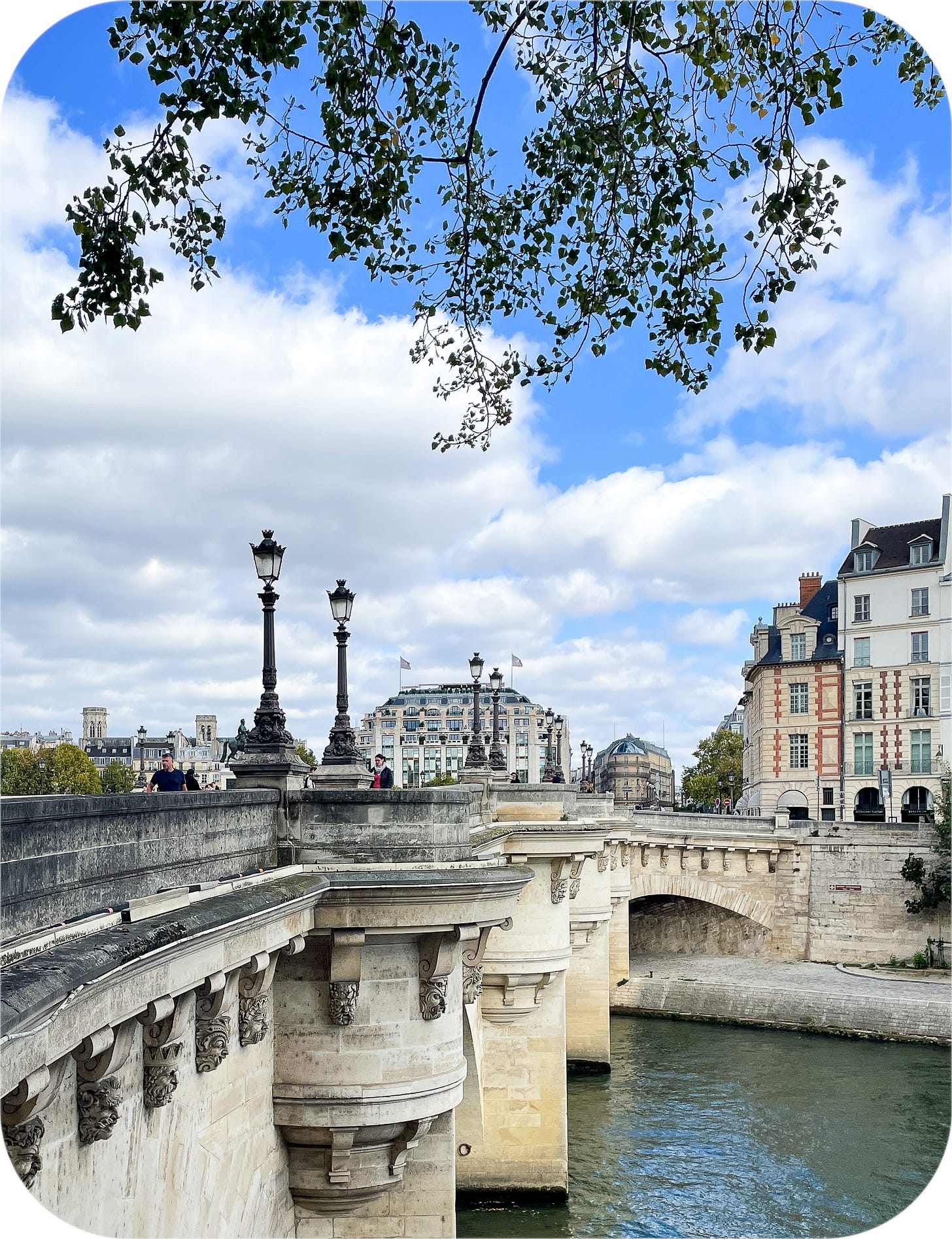


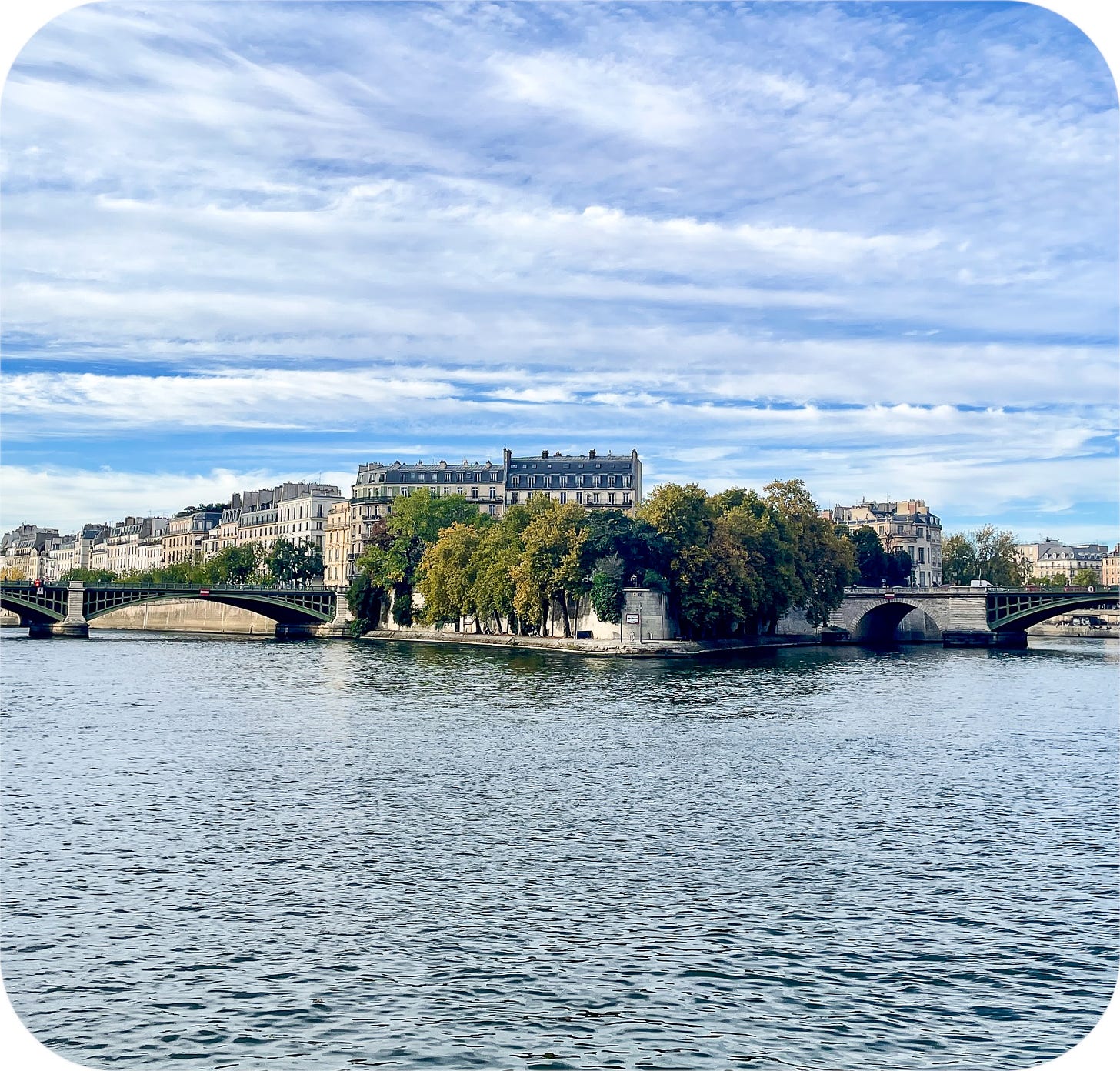

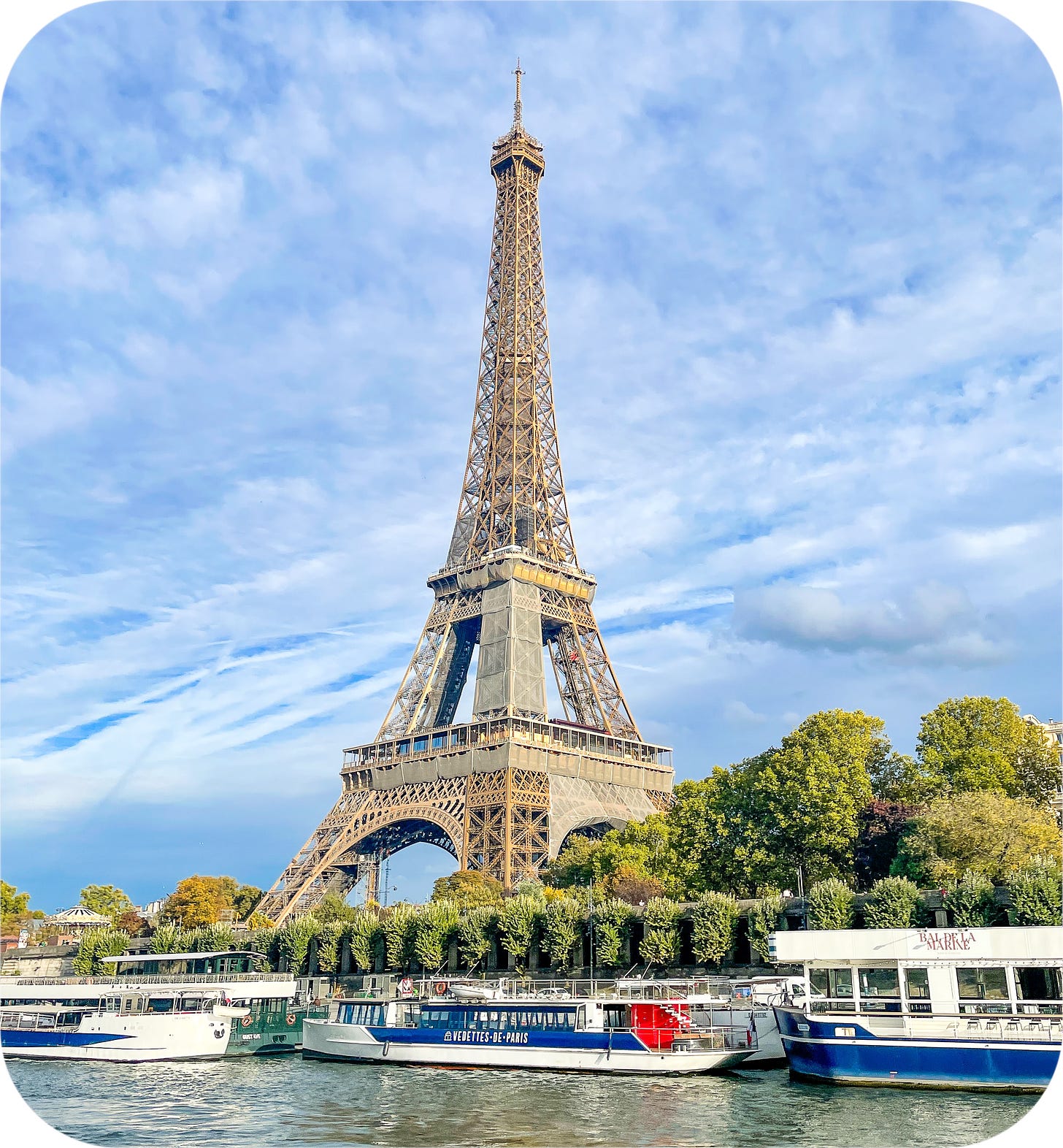
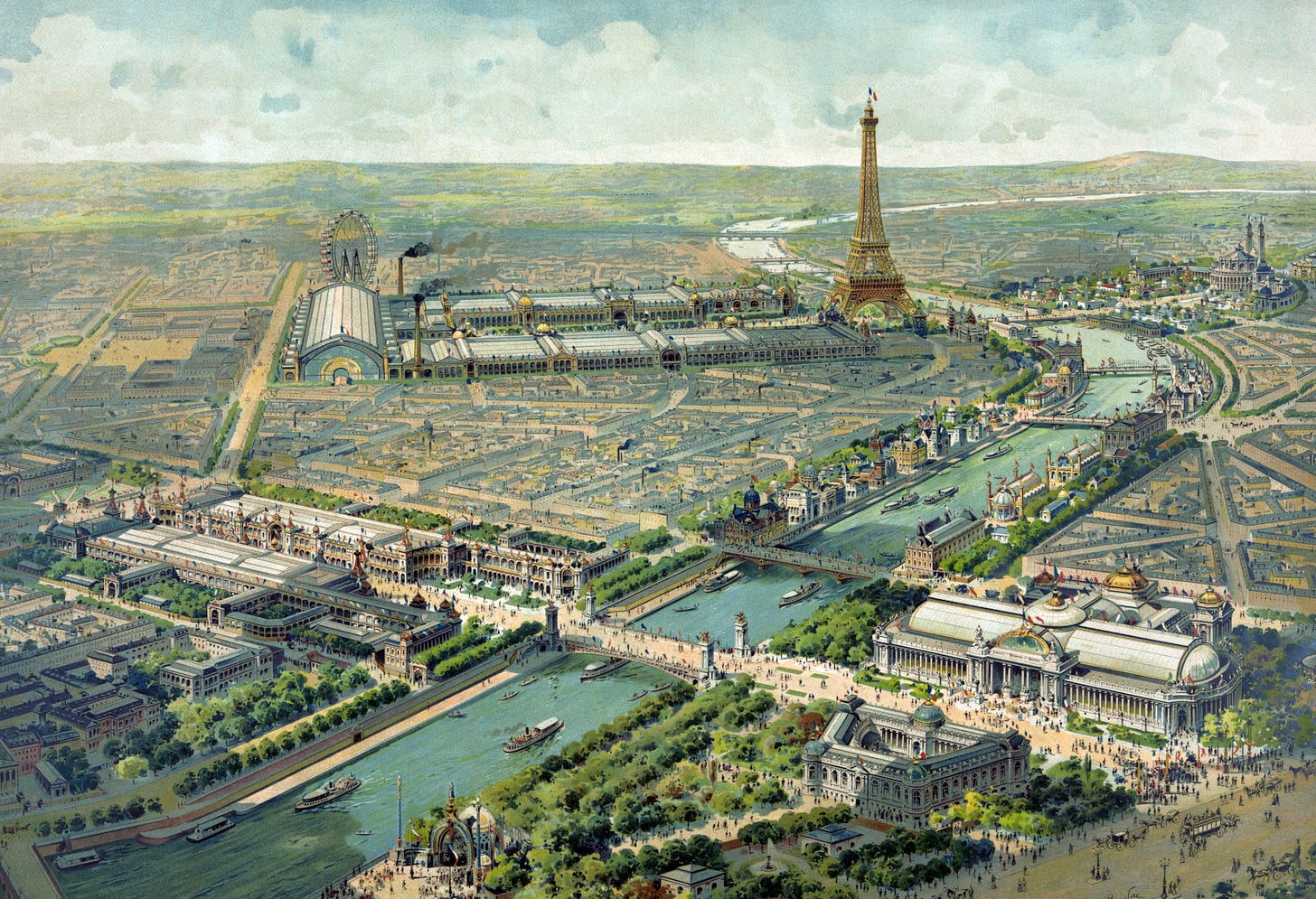
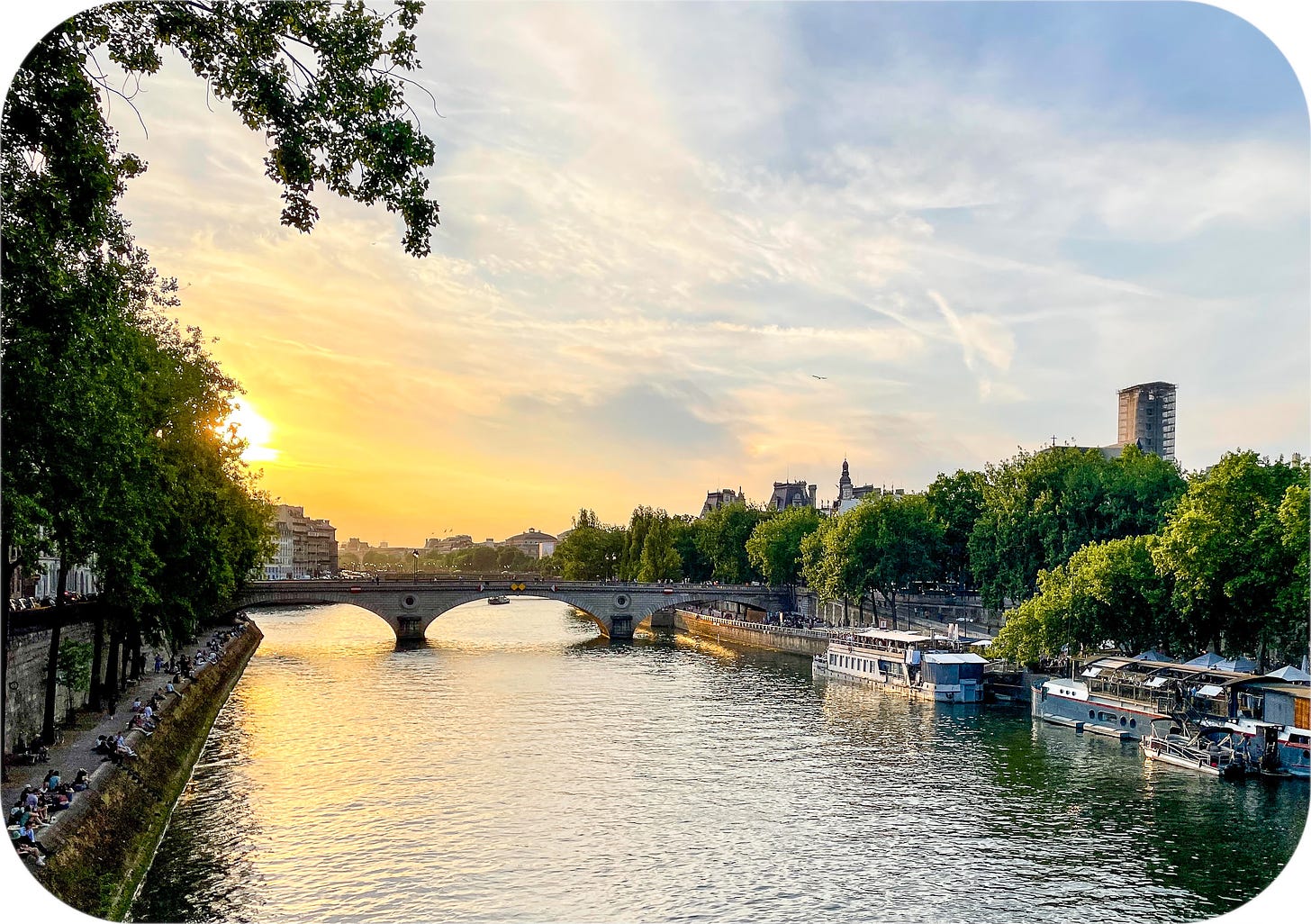
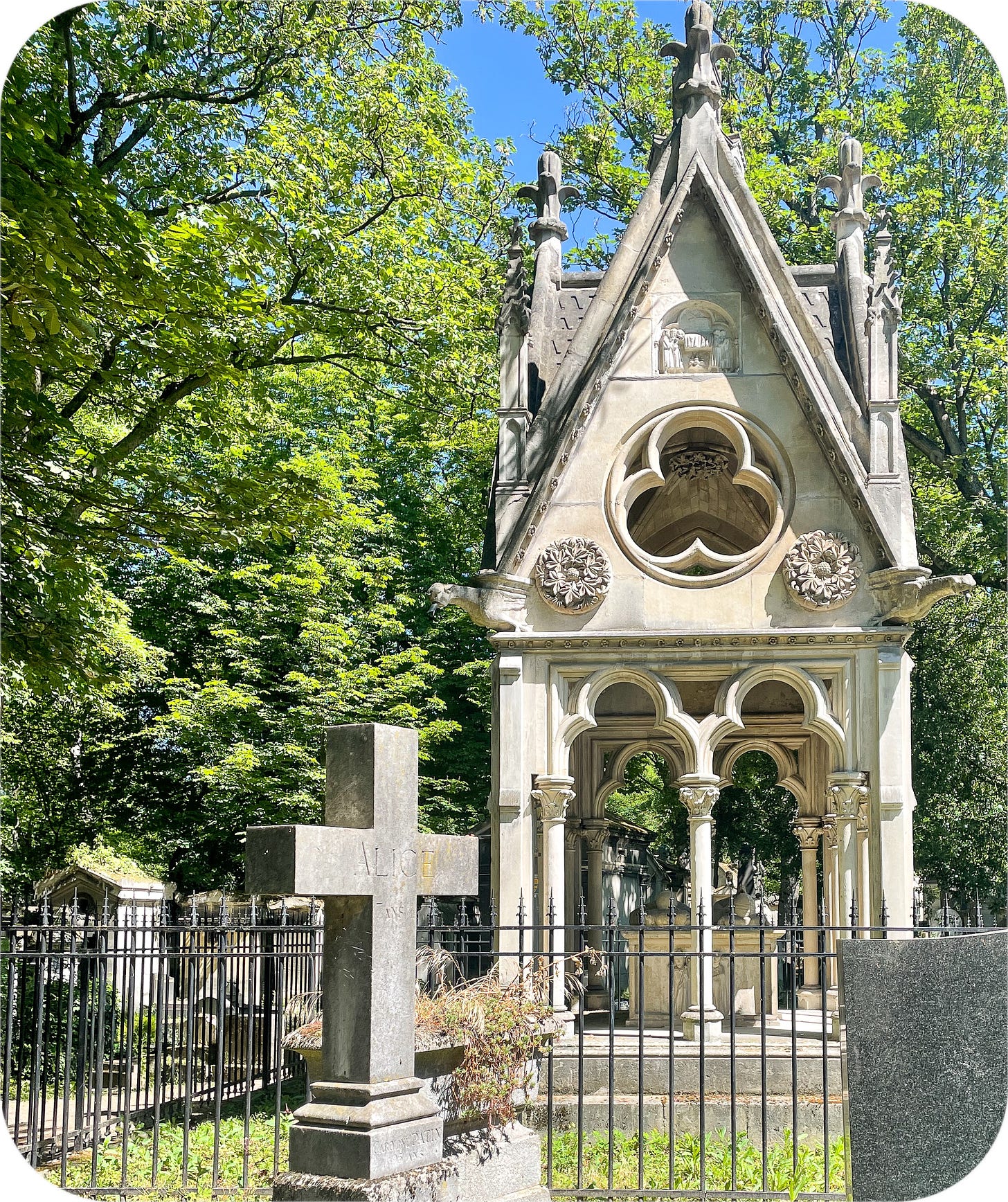

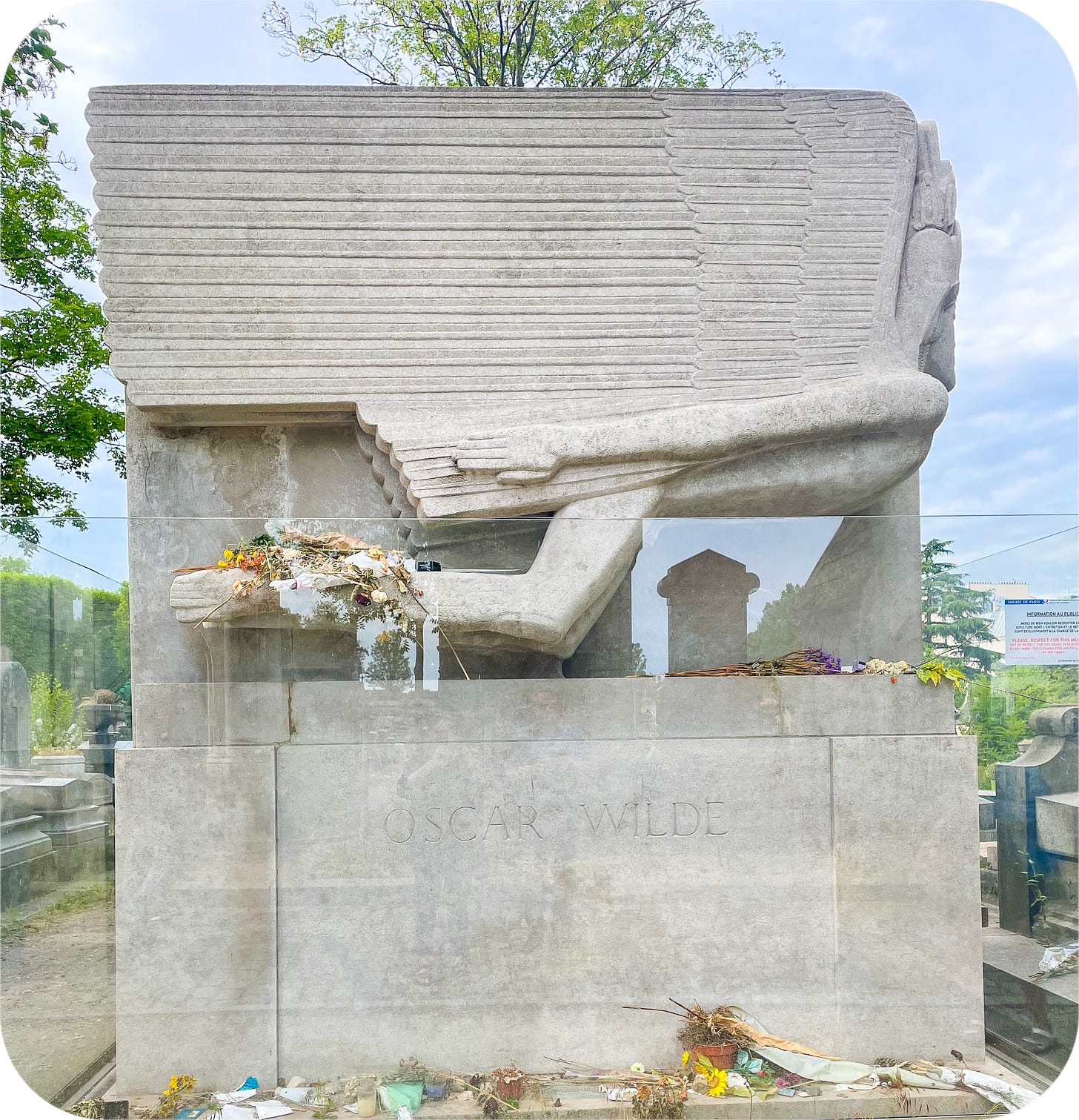

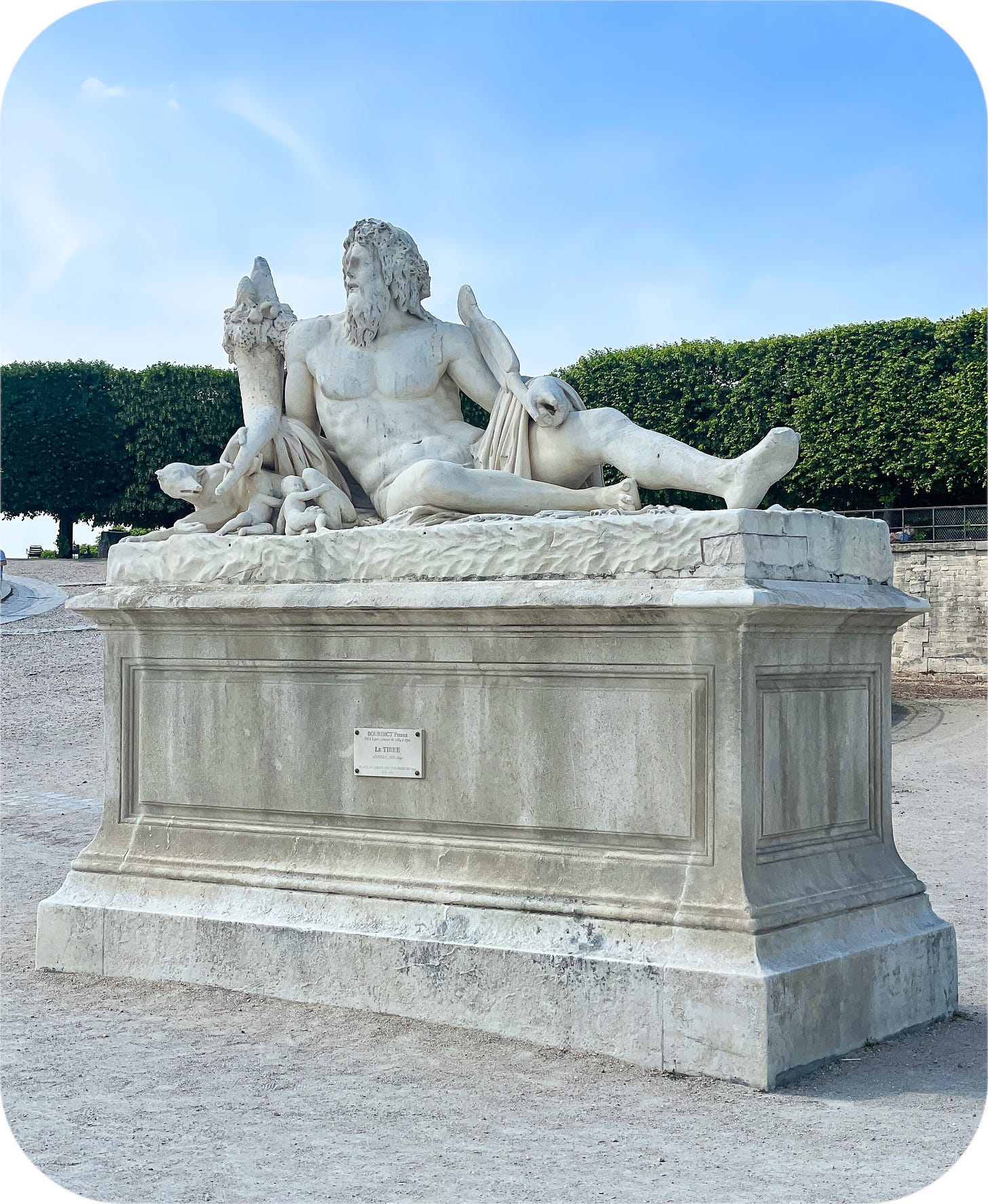
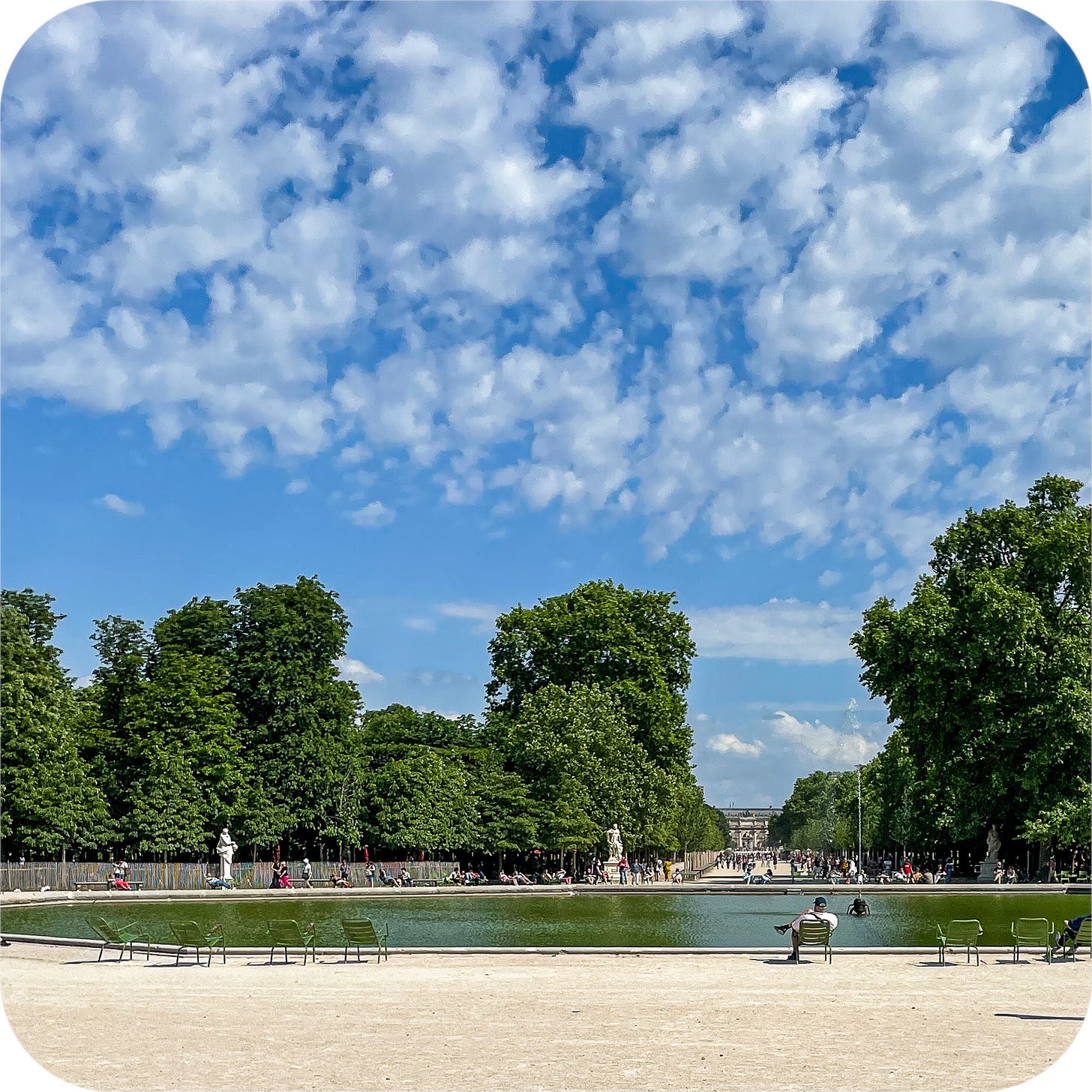

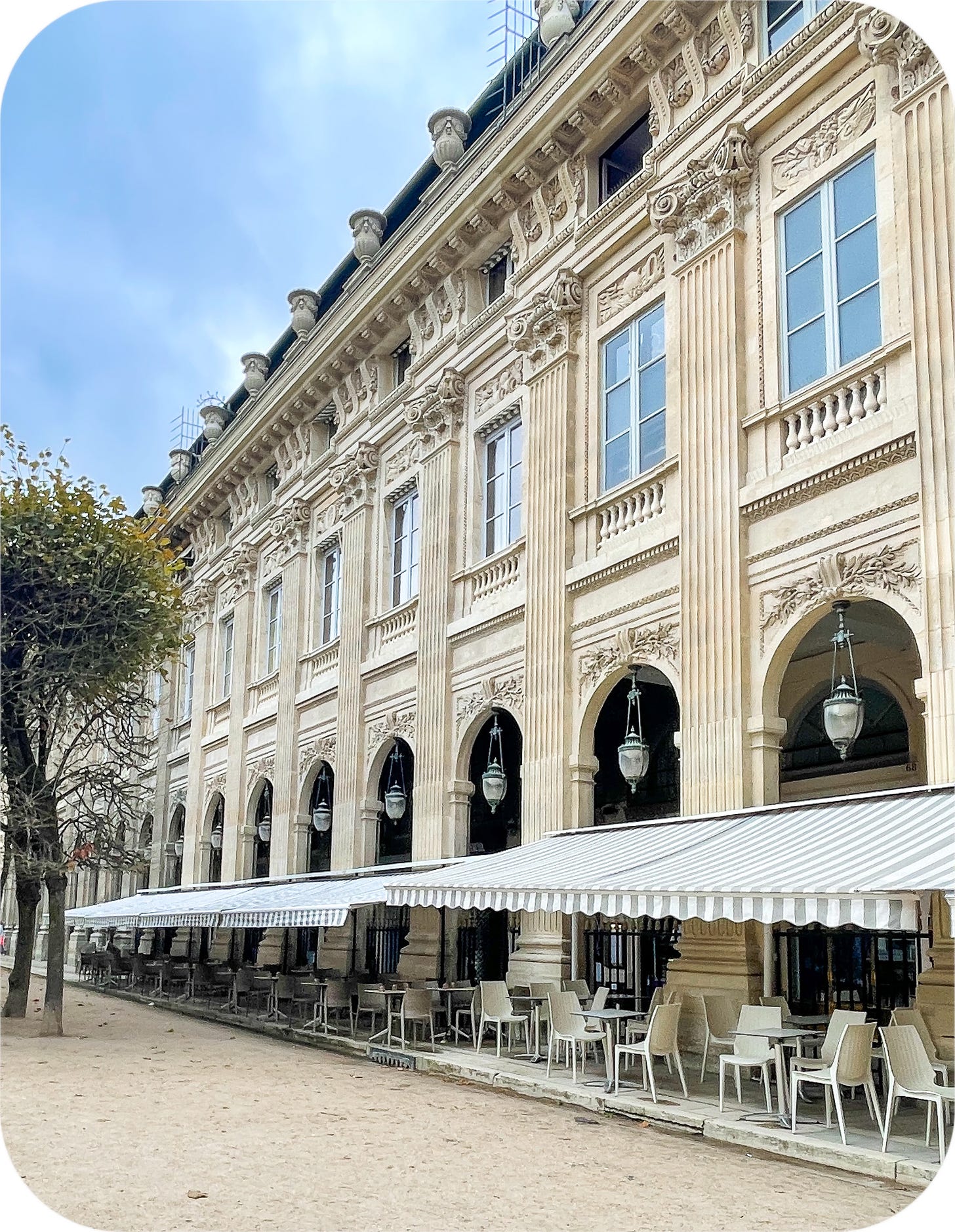
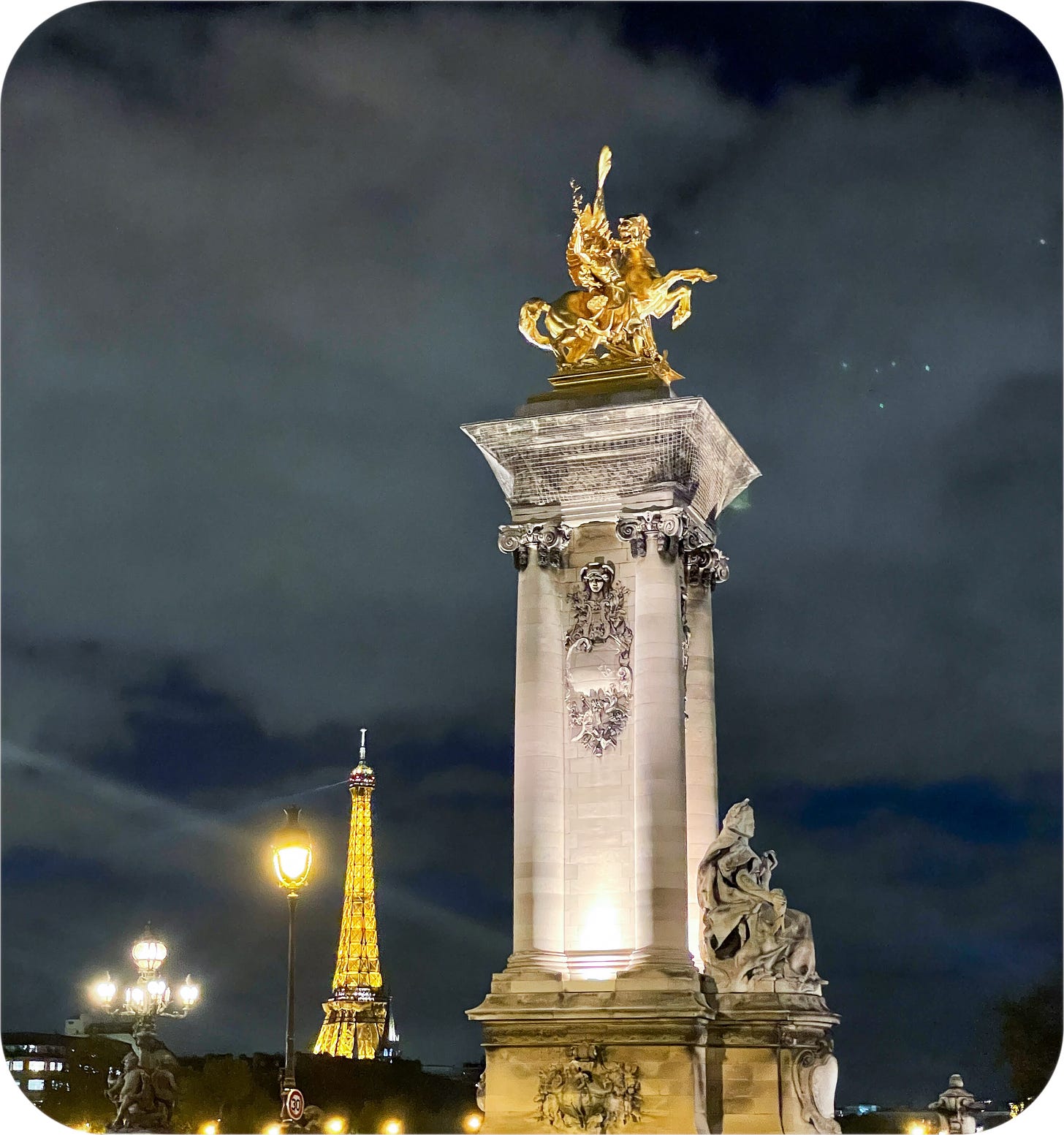

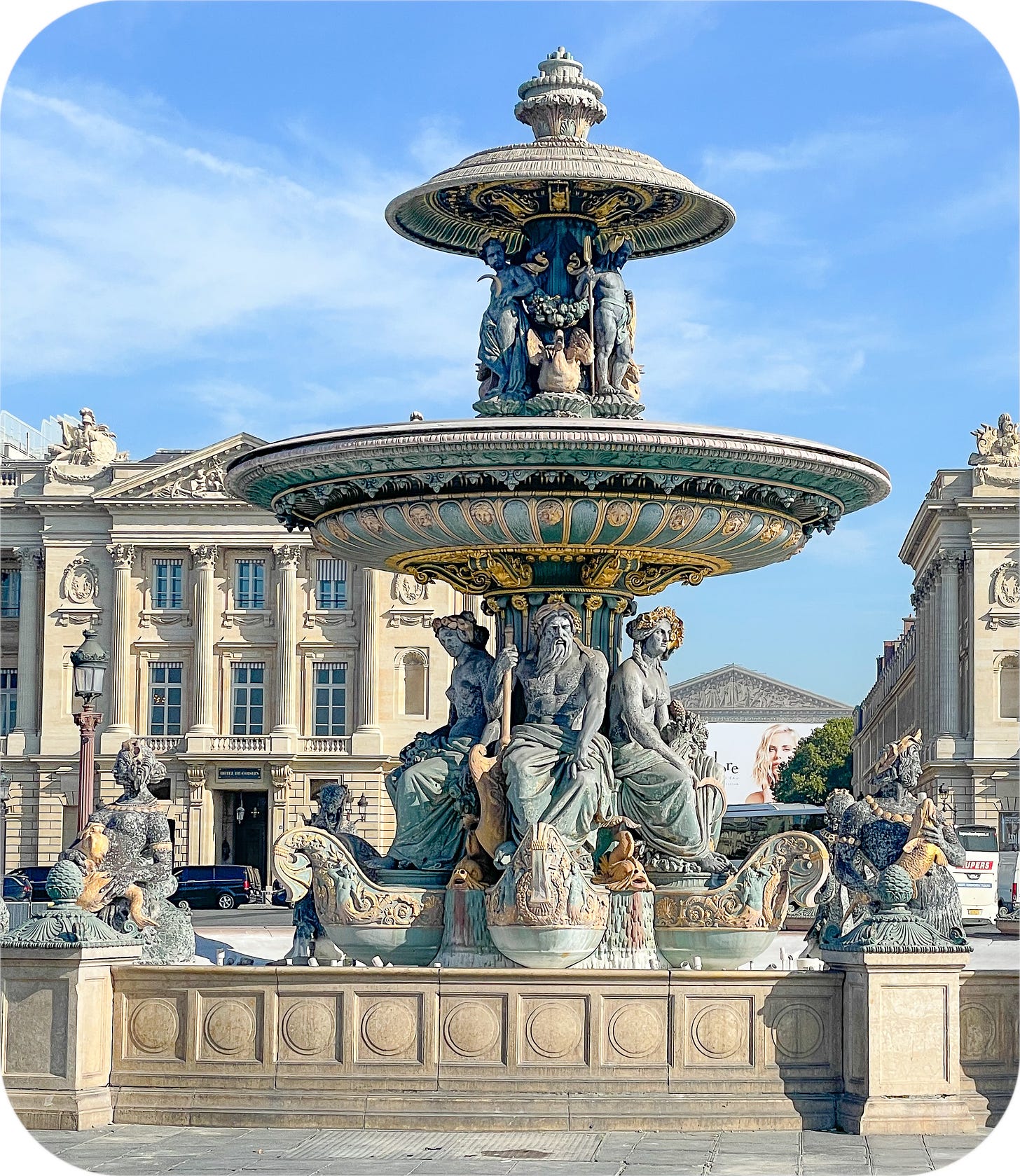




Congratulations on your first anniversary! And gorgeous photos which enhance the story.
Once again I am slain by the depth of history that you describe in your travels. I would be the tourist with my mouth open constantly walking into walls and off of curbs. The typical small-town boy lost in the big city. Your photos are beautiful, and illustrate what you describe so beautifully. I thoroughly enjoy every mind-blowing journey that I take walking with you through history and literature!